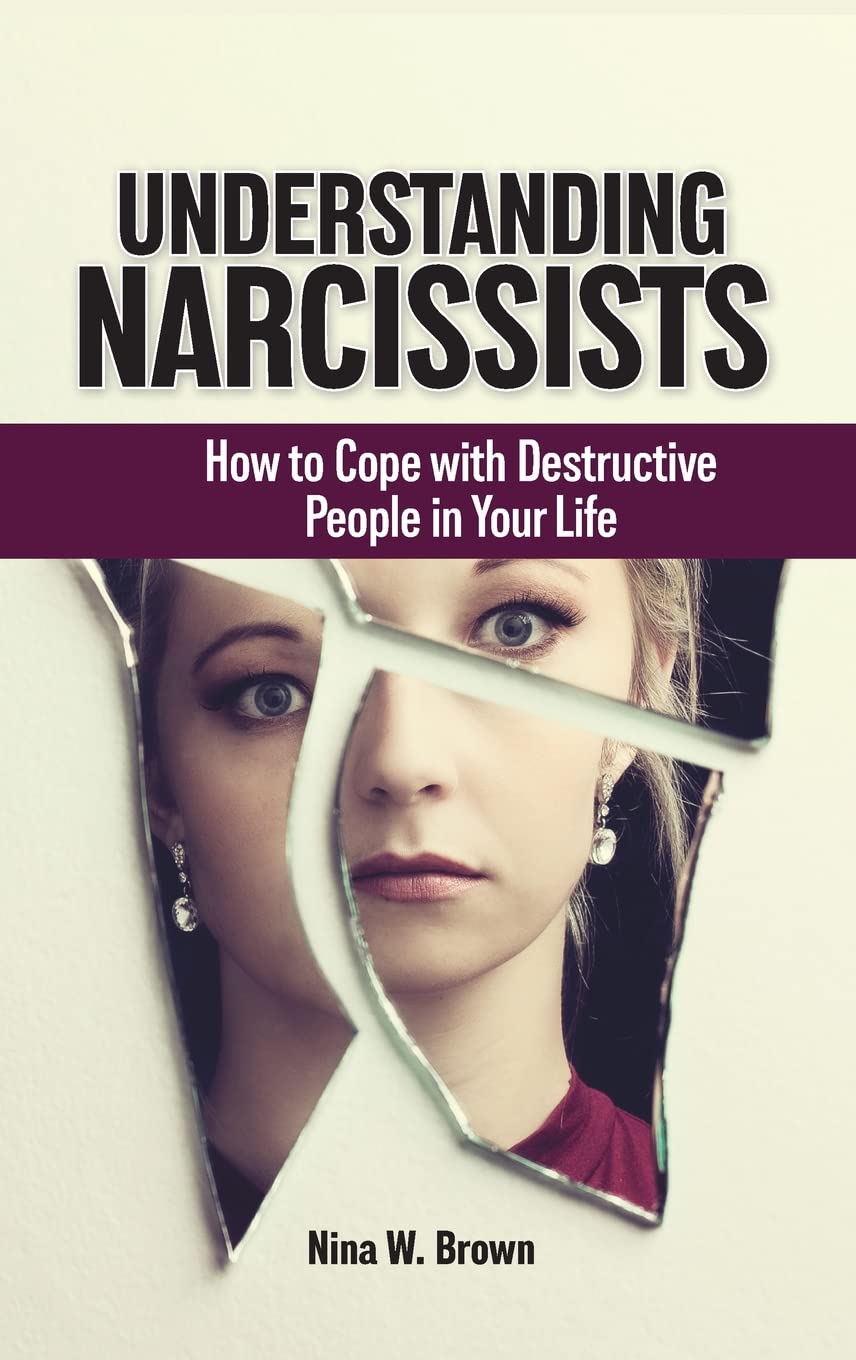with Dr. Nina W. Brown
Professor, Author: Working with the Self-Absorbed
In my quest to help myself and others better understand how to navigate narcissism at work and in life, I had the honor of speaking with Dr. Nina Brown, distinguished researcher on narcissism and professor at Old Dominion University in Norfolk, Virginia. What stood out most was her wisdom, humility and authenticity as we explored this topic together in two podcast episodes.
Season 2 Episode 37 and Episode 38
What led you to specialize in narcissism?
Dr. Nina Brown began delving into the topic of narcissism based on her own experience dealing with a department chair who was impacting everyone on his team with his difficult behaviors. She began researching and writing about the destructive narcissistic pattern in order to help others cope better with these individuals.
What is the continuum of narcissistic behaviors you write about in your books?
Nina Brown does not recommend calling anyone a narcissist who has not been diagnosed with Narcissistic Personality Disorder (NPD). Instead, there is a continuum of narcissistic behaviors that everyone is on, ranging from little to extensive. Someone can have troubling patterns which impact their relationships, but not be at a pathological level. Nina explains how healthy adult narcissism is in direct contrast to NPD.
Nina references how healthy narcissism is defined in the book the Restoration of the Self (Heinz Kohut). Healthy adult narcissism includes empathy, creativity, zest for life, appreciation for duty, appropriate sense of humor and a healthy level of self-esteem.
“Healthy adult narcissism includes empathy, creativity, zest for life, appreciation for duty, appropriate sense of humor and a healthy level of self-esteem.”
What is the defining characteristic of a narcissistic personality?
One of the most defining characteristics of someone with NPD is a lack of empathy. Those with NPD or the destructive pattern of narcissistic behaviors and attitudes don’t see a need to change, and are indifferent to or dismissive of others’ feelings. They tend to use sarcasm, taunting and teasing, and if you protest they reply with “what’s the matter, you can’t take a joke?” or “you’re being overly sensitive.”
What Led you to write Working with the Self-Absorbed 20 years ago?
Nina was asked to write this book, along with Children of the Self Absorbed, Loving the Self Absorbed, and many others. She describes how she intentionally wrote it to be practical, applying extensive research to our everyday lives and work.
How do you see destructive narcissists doing damage in organizations (e.g., to teams and corporate cultures?)
Destructive narcissistic behaviors make the workplace toxic, impacting individuals and the whole group. Ultimately, it makes the workers and the workplace less effective. People don’t feel heard, understood, nor appreciated. The troubling person may present differently to different people, so it may be difficult to get these impacts across to others. The risk for those impacted at work is being stuck in a miserable situation.
Many people with destructive narcissistic patterns do succeed through their charm and confidence. Even experienced therapists may not recognize them at first. They may come across as outgoing, charismatic, and capable. The destructive parts remain hidden at first.
When you first meet them, you’re the center of their universe. They seem to like you, encourage you, and make you feel valued. Gradually they start to pull away, while you may try harder to get the relationship back on track. But the more you try, the further away they pull. You may start blaming yourself. Can anyone relate to this pattern?
Why doesn’t everyone see the destructive narcissistic behaviors in others?
Nina Brown describes how they tend to present to those they consider higher in status very differently to those they view as equal or lower in status. For instance, their boss may not see the behaviors as the person doesn’t do any of these things with the boss. If Nina Brown was in charge, she would be sure to listen to all sides. She would also set some clear rules around behavior and encourage workers to get coaching or counselling to help them deal with negative feelings they may have.
“Destructive narcissistic behaviors make the workplace toxic, impacting individuals and the whole group. Ultimately, it makes the workers and the workplace less effective.”
How can we set boundaries and not let these folks impact our own psychological well being?
Dr. Nina Brown describes how it takes a lot of self-reflection to set healthy boundaries and protect or rebuild our well-being after dealing with destructive narcissistic behaviors. Working with a professional to understand how you got drawn and attached to this person is recommended; you will learn about your emotional susceptibility and your psychological boundaries.
A quick technique Nina Brown recommends in the moment is emotional insulation. Visualize something between yourself and the other person that allows only their words to get through. This “emotional insulation” allows you to maintain some psychological distance and protects you in the moment. Dr. Brown describes it as simple, quick, and easy!
Tell us how we can follow your work and learn more about the topic of navigating narcissists in work and life?
Nina Brown recommends a good background to understand narcissism through her book The Destructive Narcissistic Pattern. Her newest book is Understanding the Narcissist, which also helps you understand yourself and your reactions to the difficult person, so as to better protect yourself.
If you could have one wish for a better world when it comes to destructive narcissism in our lives?
That people would give their children the care, concern, and empathy they need to grow into healthy adults.
About Dr. Nina W. Brown:

Nina W. Brown, EdD, LPC, NCC, Distinguished Fellow American Group Psychotherapy Association, American Psychological Association Fellow is a professor and eminent scholar at Old Dominion University in Norfolk, VA USA. She received her doctorate from The College of William and Mary, and served as president of the Mid-Atlantic Group Psychotherapy Association, Secretary of the American Group Psychotherapy Association, President of APA Division 49 (The Society of Group Psychology and Group Psychotherapy), President of The Group Council and other positions.
She writes and publishes books on group psychotherapy and narcissism with 40+ books to date some of which have been translated into other languages. Dr. Brown’s first book was Teaching Group Dynamics: Process and Practice and she also published the first book on psychoeducational groups which is now in the 4th edition.
Other books on group therapy include Expressive Processes for Groups Counseling, Group Counseling for Elementary and Middle School Students, Creating High Performance Classroom Groups, Facilitating Challenging Groups: Leaderless, Open and Single Session Groups, Creative Activities for Group Therapy, and Effective Psychoeducational Groups.
Her ten published books on narcissism are The Destructive Narcissistic Pattern, Understanding Narcissists, Children of the Self-absorbed ( Three editions and also translated into Chinese, Dutch, German, Polish, Korean, and Czech), Children of Self-absorbed Aging Parents, Coping with Infuriating, Mean, Critical People, Coping with Your Partner’s Jealousy, Loving the Self-absorbed and Working with the Self-absorbed. Other publications include book chapters and peer reviewed journal articles.
Find more of Dr. Nina Brown’s books on Amazon.






